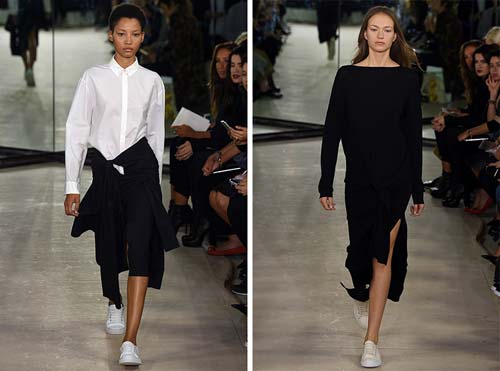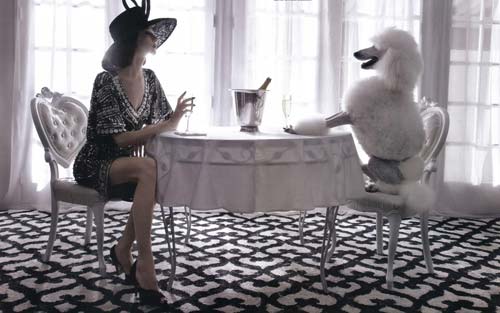Luxury can be defined as many things, from buying five-figure bags to three-figure dinners at 3-Michelin star restaurants, luxury is defined as wealth beyond imagination that expensive items that would make a regular individual in society scoff at wouldn’t be an issue at all to buy.
Perhaps that’s the how the older generation thinks, that luxury equals a vast amount of dispensable money – and especially in the fashion industry, luxury equals the ability to be exclusive and affluent through consumerism. But for many of the younger generation, the definition of luxury has begun to shift from exclusivity to convenience. Public School, a womenswear label that combines street wear and high fashion, claims that ‘new Western luxury’ has to do with quality and craftsmanship – not necessarily how much something costs or the name and history of the brand. Chow, half of the Public School duo, says that ‘luxury is all about making your life easier, the idea of ease and effortlessness.’ Representing a new movement of creative driven by taste and versatility, luxury, in a new sense can be considered minimalism at its finest in the industry. More is less, or so it seems.

Previous habits of disposable pieces and conspicuous consumerism has changed with the minds of young, fashionable generation who are after simple, durable, high-quality and forever in-trend pieces that are both luxurious yet anonymous enough to be worn repeatedly, and versatile enough to work anywhere and everywhere. Luxury as minimalism has become a practical and sustainable alternative to the materialistic spending ethos. As designer pieces become plainer, their messages follow suit too, with young and fresh designers like Public School and Joseph inspiring the likes of Stella McCartney and Chloé to go minimalist, with the philosophy that ‘less is more’ to be the new in. Even Alexander Wang, who had once focused on grunge and colour have moved onto the luxury ethos of versatile simplicity.
Luxury as minimalism ebbs as not only a popular aesthetic, but also a lifestyle that underpins many social developments in the 20th century – with the liberation of women’s freedoms from their stereotypical roles in the 30s came the social change of the way they dressed. From the restrictive skirts and corsets came the masculine and more practical attire for women to wear. With political relevancy comes the emergence of avant-garde Japanese designers (Yohji Yamamoto and Comme des Garçons being the most famous for this) emphasising luxury in a distressed and simple manner with deliberately destroyed and ripped style to reflect the bourgeois lifestyle.

Ultimately, fashion continues to change its direction, from outrageously distracting to simplistic designs, from bold colours to sombre and gothic, the industry defines luxury as simple and plain – an emphasis on less is more, investment on quality rather than quantity and above all, a change in the way the young generation sees luxury. The new idea of luxury has become less about affluent and more about clean and carefully curated and meaningful purchases.


![5 Reasons You Should Travel Alone Airplane [image source: chau nguyen/ http://thedevilhatessweatpants.blogspot.com.au ], crowd ink, crowdink, crowdink.com, crowdink.com.au](https://crowdink.com/wp-content/uploads/2016/08/Chau-airplane-218x150.jpg)





























